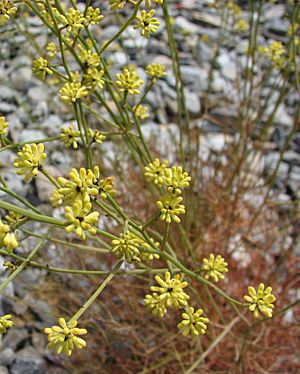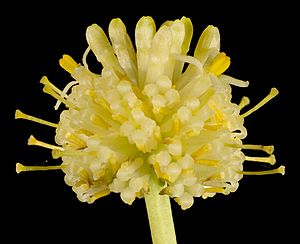Stirlingia simplex facts for kids
Quick facts for kids Stirlingia simplex |
|
|---|---|
 |
|
 |
|
| Scientific classification | |
| Genus: |
Stirlingia
|
| Species: |
simplex
|
The Stirlingia simplex is a special plant found only in Western Australia. It's a unique part of the natural world there.
Contents
About This Plant
Stirlingia simplex is a type of plant called a perennial. This means it lives for more than two years. It can grow as a small shrub or as a herb. Herbs are plants with soft stems.
How It Grows
This plant has short stems that grow from a root system underground. This root system lives for many years. The stems can be up to ten centimetres long. The whole plant usually grows to be between ten and 60 centimetres tall. Sometimes, it can even reach one metre.
Its Leaves and Flowers
The leaves of Stirlingia simplex are soft. They split into many smaller parts, like a fork. The smallest parts of the leaves are about two to twenty millimetres long.
The flowers are cream or yellow. They grow in tight groups, called heads. These flower heads are about ten to 15 millimetres wide. They sit on top of long stalks, called scapes. These stalks can be up to 60 centimetres tall.
Where It Lives
Stirlingia simplex grows in many parts of the Southwest Botanic Province in Western Australia. This area is known for its many different plants.
Its Home Range
You can find this plant from a place called Eneabba in the north. It stretches south to Waroona and east to Hyden.
What Kind of Places It Likes
This plant can grow in different types of soil. It often lives among proteaceous-myrtaceous heath plants. It also grows in eucalypt woodlands. It likes places that get wet during certain times of the year.
Is It Safe?
Good news! This plant is not considered to be in danger. It is not a threatened species.

